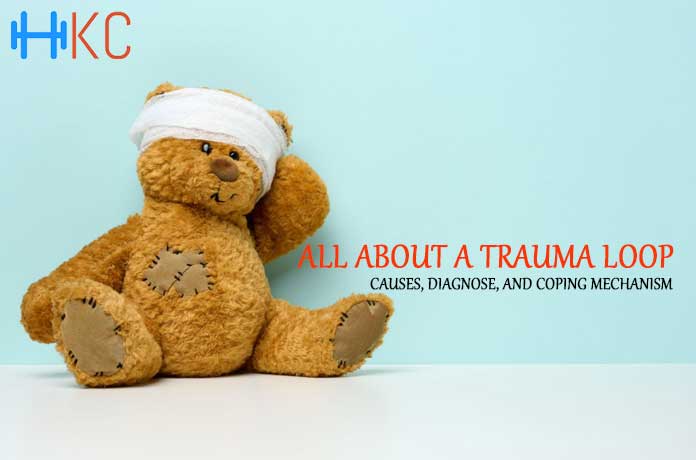Have you ever encountered a situation where a thought, or a string of thoughts, keeps on repeating in your head? If yes, then you’re a victim of rumination. Although it’s a normal process that lots of people face worldwide, its prolonged effects can take a toll on your mental health.
The chain of the same thoughts becomes more dangerous when it’s a result of a traumatic experience. In many cases, it leads to post-traumatic stress disorder (PTSD).
After a trauma, many victims may experience stressful responses in their bodies. And, it happens again and again with them. This is called trauma looping, or a trauma loop. It can be a terrifying experience for a victim, but the condition can be treated by understanding the reasons behind it and addressing them.
What is a Trauma Loop Exactly?
It can be defined as a brain state that develops a track in the nervous system. In certain situations, it happens multiple times, and over time, it becomes stronger than before.
Usually, trauma loops occur when real-world situations are overwhelming. These are the times when the nervous system finds it difficult to organize.
Some widely common sources of these loops include:
- Sudden changes in life, such as the death of loved ones, business loss, or bad news
- A long-term illness
- Stress for a long time
- Emotional abuse
- Accidents
What are the Symptoms of a Trauma Loop?
The causes, or resources, of trauma loops, are common. And, they don’t lead to a loop all the time. But, when they do, they are extremely challenging to cope with. Also, leaving the condition untreated for a long time leads to more serious outcomes such as a decline in mental and physical health
Now, the question is: How to find out whether or not you’ve fallen victim to a trauma loop due to a tragic incident in the past?
Here are some common symptoms that experts have noticed in those that suffer from trauma loops:
- Visuals of the incident
- Nightmares
- Preferring social isolation or boycotting gatherings
- Depression
- A sense of guilt
- Insomnia or loss of sleep for a long time
- Panic attacks
- Anxiety
- Mood swings
- Confusion
- Irritation for no reason
- Body ache or muscle pains for a long time
If you experience any of these symptoms, or a combination of multiple of them, for many days and weeks, then there are high chances that you are having trauma loops.
How To Diagnose and Treat a Trauma Loop?
Having these loops may be common after a traumatic incident, but they shouldn’t be ignored. For a better and stress-free life, it is essential to diagnose the condition and treat it during its early stages.
Although the symptoms of a trauma loop are easy to notice, diagnosing the condition is difficult. To diagnose it, you must reach out to experts like trauma loops. Only they have the right skills and technologies to understand the current state of the brain and discover the level of stress there.
However, if you’ve been diagnosed with trauma loops, you should focus on treating them, rather than start thinking about them over and over again.
How do treat these scary loops?
According to experts, there is more than one way to cope with the condition. Those with the loops can try meditation practices like focusing on your breathing. Apart from that, Cognitive Behavioral Therapy (CBT) and Neuroplasticity are some effective methods to get rid of the loops.
Final Words
Trauma looping can be common and scary, but it is treatable. If you experience it, you should take the right steps to cope with it as soon as possible. Remember, healing starts with you. Take the right step at the right time and live the happy life that you deserve. All the best!














